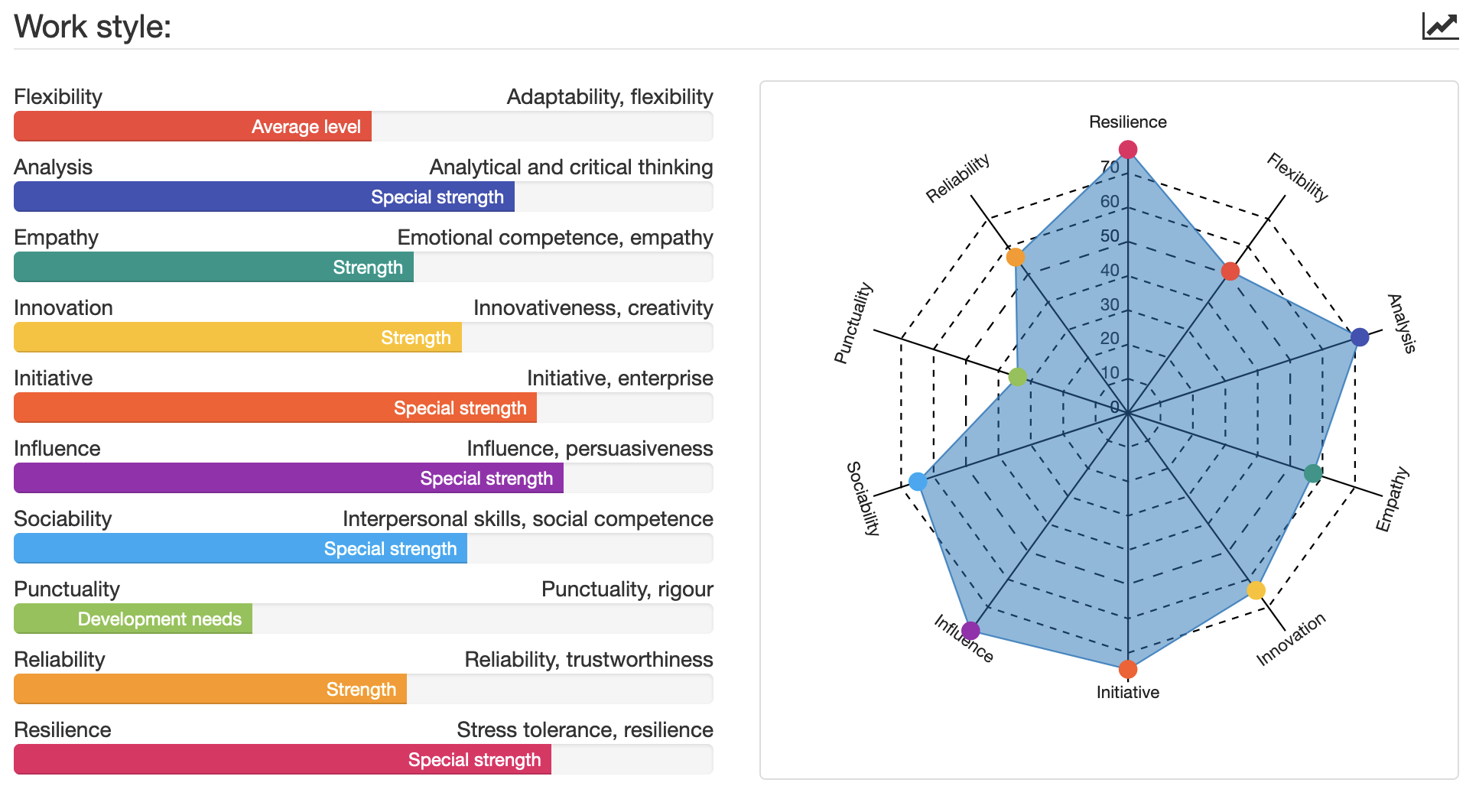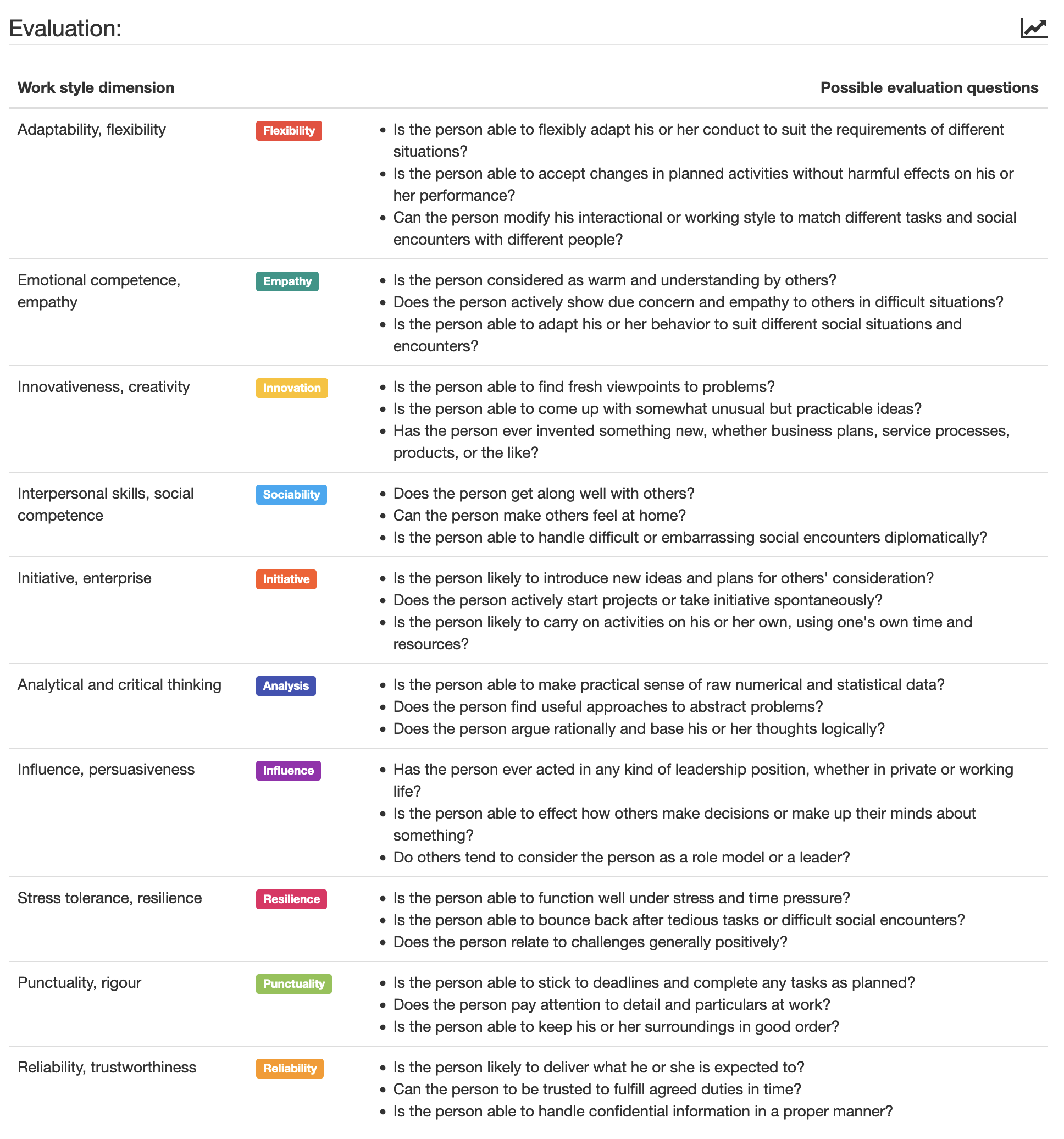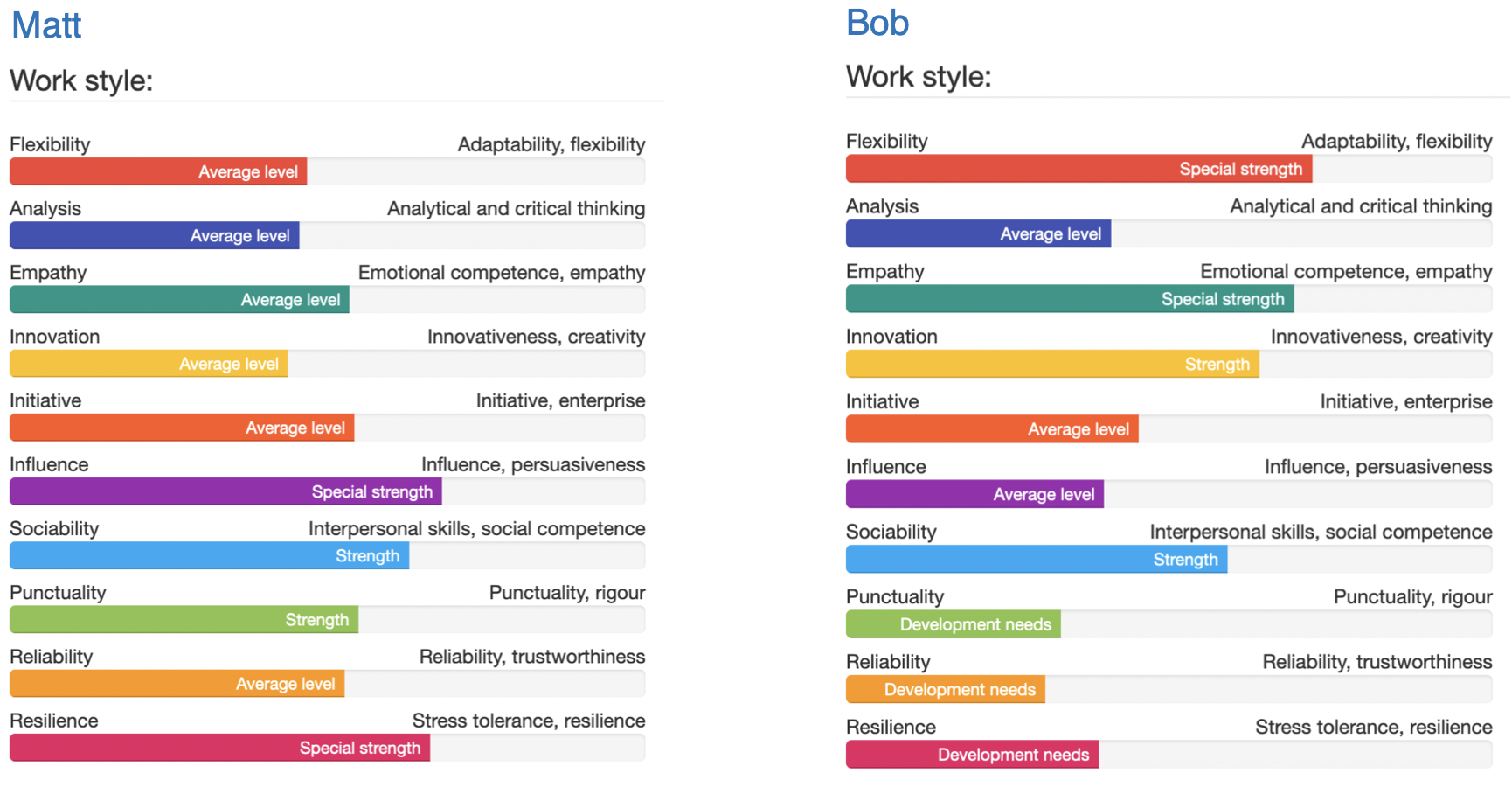Working Style
Working styles encompass a vast array of approaches, behaviors, and preferences that individuals bring to their professional endeavors. From meticulously organized planners to spontaneous innovators, the spectrum of working styles is virtually limitless. However, amidst this diversity, certain psychological characteristics emerge as central factors influencing how individuals operate in various roles and environments.
The Mindfindr test stands out as a tool that sheds light on these psychologically significant traits, offering valuable insights into individuals’ suitability for different professions. Unlike generic assessments that may overlook the intricacies of personality, the Mindfindr test hones in on key psychological attributes that underpin effective performance in the workplace.
What sets the Mindfindr test apart is its emphasis on identifying and analyzing these central characteristics within the context of diverse working styles. Rather than providing a one-size-fits-all approach, the test recognizes that different roles demand different strengths and qualities. By considering the broader framework of a company, evaluators gain a deeper understanding of how individuals’ psychological makeup aligns with the requirements of various professions.
The working style reflects preferred methods for completing tasks and managing responsibilities. The Mindfindr work style framework covers 10 different work styles that are defined and illustrated in tables and graphs in extended reports. These descriptions may be used to consider to what extent a person’s practical work style preferences match the requirements and concrete circumstances of the posts of interest. While based on the personality, competences and preferences of the respondent, the ten work styles describe the person’s optimal sphere of work activities and tasks concretely.
Working Styles Explained
Adaptability and flexibility mean that a person is able to adapt his or her activities to match the concrete requirements of different work situations and accepts unexpected changes in work arrangements without that affecting performance or implementation of tasks overly negatively.
Innovativeness and creativity show in a person’s ability to approach problems creatively from fresh perspectives. Innovative and creative persons create arts and come up with new business ideas, products and services.
Analytical and critical thinking refers to a person’s capacity to interpret numerical and statistical data practically, argument rationally and produce comprehensible analyses of abstract problems.
Resilience and stress tolerance enable a person to function under stressful conditions and strict time constraints, and allow the person to bounce back from these stressors. Resilient persons relate positively to new challenges.
Emotional competence shows in a person’s ability to adapt one’s behavior to positively match emotionally demanding social situations. Emotionally competent persons are actively empathetic and understanding towards people in difficulties.
Initiative and enterprise show an ability to actively present ideas and plans for others’ consideration and in readiness to launch projects and invest one’s own time and other resources to further these endeavors.
Interpersonal skills enable a person to act in a conciliatory manner in awkward situations. Interpersonal skills also show in an ability to start conversations with different kinds of people, making them readily feel at home.
Influence and persuasiveness show in a person’s readiness to make decisions and assume leadership in various situations. People around will often comply with the summons of these influential persons, deeming them as natural leaders and role models.
Reliability and trustworthiness entail that a person behaves according to expectations, duly implements agreed tasks and deals pertinently with confidential information.
Punctuality and rigor show in a person’s ability to keep his or her surroundings tidy and things in order. Punctual persons will arrive in time for meetings and finalize their tasks to the detail.

Mindfindr test generates a verbal depiction of the spectrum ranging from developmental needs to special strengths. The visual representation facilitates a comprehensive understanding of the participant’s profile.

Case: High-pressure work environment (Resilience)
In a high-pressure work environment, Matt and Bob demonstrate contrasting levels of stress tolerance and resilience.

Matt is renowned for his exceptional ability to remain calm and composed under pressure. Regardless of the challenges or setbacks he encounters, Matt maintains a positive attitude and tackles obstacles with determination and resilience. His unwavering confidence and ability to stay focused in the face of adversity inspire confidence in his colleagues and make him a trusted leader in times of crisis.
On the other hand, Bob struggles with managing stress and maintaining resilience in challenging situations. He may become easily overwhelmed when confronted with tight deadlines, demanding clients, or unexpected setbacks. Bob’s tendency to succumb to stress can impact his performance and effectiveness, leading to decreased productivity and morale both for himself and his team.
To support Bob in enhancing his stress tolerance and resilience, the team could implement strategies such as providing stress management training, offering resources for self-care and relaxation techniques, and fostering a supportive work environment where individuals feel comfortable seeking help and support when needed. By equipping Bob with the tools and resources to manage stress more effectively, the team can empower him to overcome challenges with greater confidence and resilience, ultimately contributing to his personal growth and professional development.
Case: Matilda’s strengths and challenges
In a team environment, Matilda stands out for her exceptional interpersonal skills and social competence, yet faces challenges with analytical and critical thinking.

Matilda excels in building rapport with colleagues and clients alike, demonstrating empathy, active listening, and effective communication. Her ability to understand others’ perspectives, navigate complex social dynamics, and foster positive relationships contributes significantly to team cohesion and collaboration. Matilda’s natural charisma and emotional intelligence make her a valuable asset in roles that require strong interpersonal connections, such as client relations or team leadership.
However, Matilda encounters difficulties when it comes to analytical and critical thinking tasks. She may struggle with processing complex information, identifying underlying patterns, or evaluating situations from a logical standpoint. Matilda’s preference for interpersonal interactions and emphasis on relationships may lead her to prioritize people-oriented tasks over analytical problem-solving, potentially hindering her ability to excel in roles that require strong analytical skills or strategic decision-making.
To support Matilda in overcoming these challenges, the team could provide targeted training or professional development opportunities focused on enhancing analytical and critical thinking skills. Additionally, assigning Matilda to cross-functional projects or collaborative tasks that require both interpersonal and analytical abilities can help her leverage her strengths while also developing areas for improvement. By nurturing Matilda’s analytical capabilities alongside her interpersonal skills, the team can empower her to achieve a more balanced and well-rounded skill set, ultimately enhancing her overall effectiveness and contribution to the team.